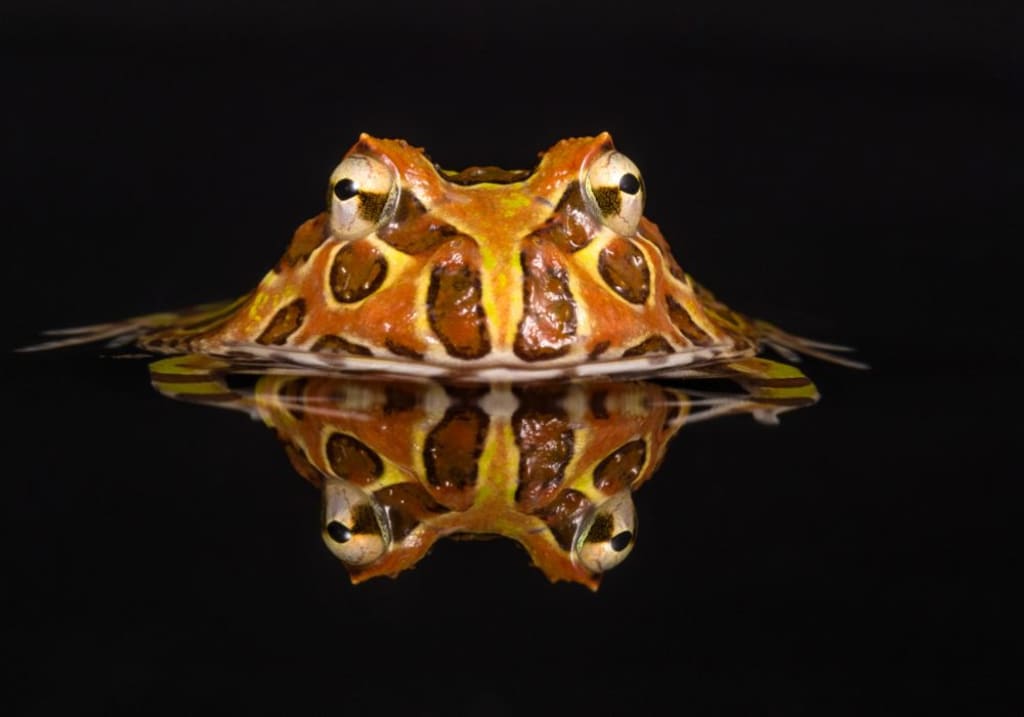
A Guide to Understanding Your Amphibian Friend's Vocalizations
Frogs are fascinating creatures that communicate through a variety of calls. As a pet frog owner, understanding these vocalizations is key to bonding with your amphibian friend and ensuring their well-being. In this comprehensive guide, we'll explore the different types of frog calls, how to identify your specific species, and what your pet frog might be trying to tell you.
The Basics of Frog Calls
Frog calls serve several important purposes, including:
- Attracting mates: Male frogs use their distinctive calls to advertise their presence and attract females for breeding.
- Defending territory: Frogs may call to warn other males to keep their distance and not encroach on their territory.
- Communicating distress: Frogs can make distress calls when attacked by predators to stun the predator and enable the frog to escape.
- Rejecting unwanted advances: If a male frog tries to mate with a female that has already bred or another male, the uninterested frog may make a release call to communicate that the male should let go.
While only male frogs make advertisement and territorial calls, both males and females are capable of making release or distress calls. The advertisement call is the most useful for identifying frog species, as each species has its own unique "love song".
Common Pet Frog Species and Their Calls
There are many species of frogs kept as pets, each with their own distinct calls. Here are some of the most popular pet frog species and what their calls sound like:
African Dwarf Frog (Hymenochirus spp.)
- Quiet species that rarely calls
- May make soft clicking or croaking sounds
American Green Tree Frog (Hyla cinerea)
- Loud, harsh croak
- Higher-pitched and louder than the squirrel tree frog
American Bullfrog (Lithobates catesbeianus)
- Deep, resonant "jug-o-rum" call
- Loud, sonorous croaks
Pacman Frog (Ceratophrys spp.)
- Loud, deep croaks
- May make snoring or grunting sounds
White's Tree Frog (Litoria caerulea)
- Deep, slow "wark wark" call
- Loud, guttural croaks
Gray Tree Frog (Hyla versicolor)
- Loud, buzzing trill
- Sounds like a fingernail dragged across a comb
Poison Dart Frog (Dendrobates spp.)
- Quiet species that rarely calls
- May make soft peeping or clicking sounds
It's important to note that frog calls can vary based on factors like body size, weather conditions, and geographic location. Your pet frog's calls may not perfectly match the examples above, but understanding the general sound of your species' calls can help you identify what your frog is trying to communicate.
Decoding Your Pet Frog's Calls
Now that you know the basics of frog calls and what your specific species sounds like, let's dive into what your pet frog might be telling you through their vocalizations:
Calling for a mate: If you hear your male frog making loud, frequent calls, especially during breeding season, he's likely trying to attract a female. While this is a natural behavior, it's important to remember that pet frogs should not be bred unless you have the proper facilities and expertise to care for the offspring.
Defending his territory: If your frog is calling in response to another frog's calls or if he's calling from a specific spot in his enclosure, he may be defending his territory. This is common in species that are kept in groups, like White's tree frogs or African dwarf frogs.
Expressing distress: If your frog makes a loud, high-pitched call or a series of short, sharp croaks, he may be in distress. This could be due to something as simple as being handled or as serious as illness or injury. If you suspect your frog is in distress, it's best to consult with an exotic animal veterinarian.
Rejecting unwanted attention: If you have multiple male frogs in the same enclosure and hear a series of short, soft clicks or croaks, one of the males is likely trying to mate with another male. This is a normal behavior, but it's best to separate the frogs to avoid stress or injury.
Communicating contentment: While not a specific call, some pet frog owners report that their frogs make soft, contented sounds when they're being handled or when their enclosure is being cleaned. These sounds are often described as chirps, peeps, or clicks and may indicate that your frog is happy and comfortable in their environment.
Creating a Frog-Friendly Environment
Understanding your pet frog's calls is just one part of being a responsible frog owner. It's also important to provide your frog with a safe, comfortable, and species-appropriate environment. Here are some tips for creating a frog-friendly habitat:
- Provide adequate space: Frogs need enough room to move around and hide. Make sure your enclosure is large enough for your frog to fully extend its body without touching the sides.
- Maintain proper temperature and humidity: Different frog species have different temperature and humidity requirements. Research your specific species and use thermometers and hygrometers to monitor and maintain the proper conditions.
- Offer hiding spots: Frogs feel most secure when they have places to hide. Provide plenty of hiding spots, such as rocks, logs, or plants, to reduce stress and encourage natural behaviors.
- Use appropriate substrate: Choose a substrate that is safe for your frog and helps maintain proper humidity levels. Sphagnum moss, coconut fiber, or paper towels are good options for many species.
- Provide clean water: Frogs absorb water through their skin, so it's important to provide a clean, dechlorinated water source. Change the water regularly to keep it fresh and free of waste.
- Feed a balanced diet: Feed your frog a varied diet of appropriately sized prey items, such as crickets, mealworms, or small fish. Dust the food with a calcium and vitamin supplement to ensure your frog is getting the nutrients it needs.
By creating a safe, comfortable environment and understanding your pet frog's calls, you can build a strong bond with your amphibian friend and ensure their well-being. Remember, every frog is unique, so it may take some time and patience to learn your individual frog's vocalizations and behaviors.
Conclusion
Frog calls are a fascinating way for these unique creatures to communicate. By understanding the different types of calls and what they might mean, you can gain valuable insight into your pet frog's needs and behaviors. Whether your frog is calling to attract a mate, defend its territory, or express distress, being able to interpret these vocalizations can help you provide the best possible care for your amphibian friend.
In addition to understanding your frog's calls, it's important to create a safe, comfortable environment that meets your frog's specific needs. By providing adequate space, proper temperature and humidity, hiding spots, clean water, and a balanced diet, you can help ensure your pet frog lives a long, healthy life.
If you have any concerns about your pet frog's health or behavior, it's always best to consult with an exotic animal veterinarian. They can provide expert advice and guidance on caring for your unique pet.
So, the next time you hear your pet frog making a call, take a moment to listen and try to understand what they might be telling you. With a little bit of knowledge and a lot of love, you can build a strong bond with your amphibian friend and enjoy watching them thrive in your care.
About the Creator
Hasan
Welcome...
In this site of mine you can learn amazing things and many information that you don't know so please subscribe to my site.
Enjoyed the story? Support the Creator.
Subscribe for free to receive all their stories in your feed. You could also pledge your support or give them a one-off tip, letting them know you appreciate their work.






Comments
There are no comments for this story
Be the first to respond and start the conversation.